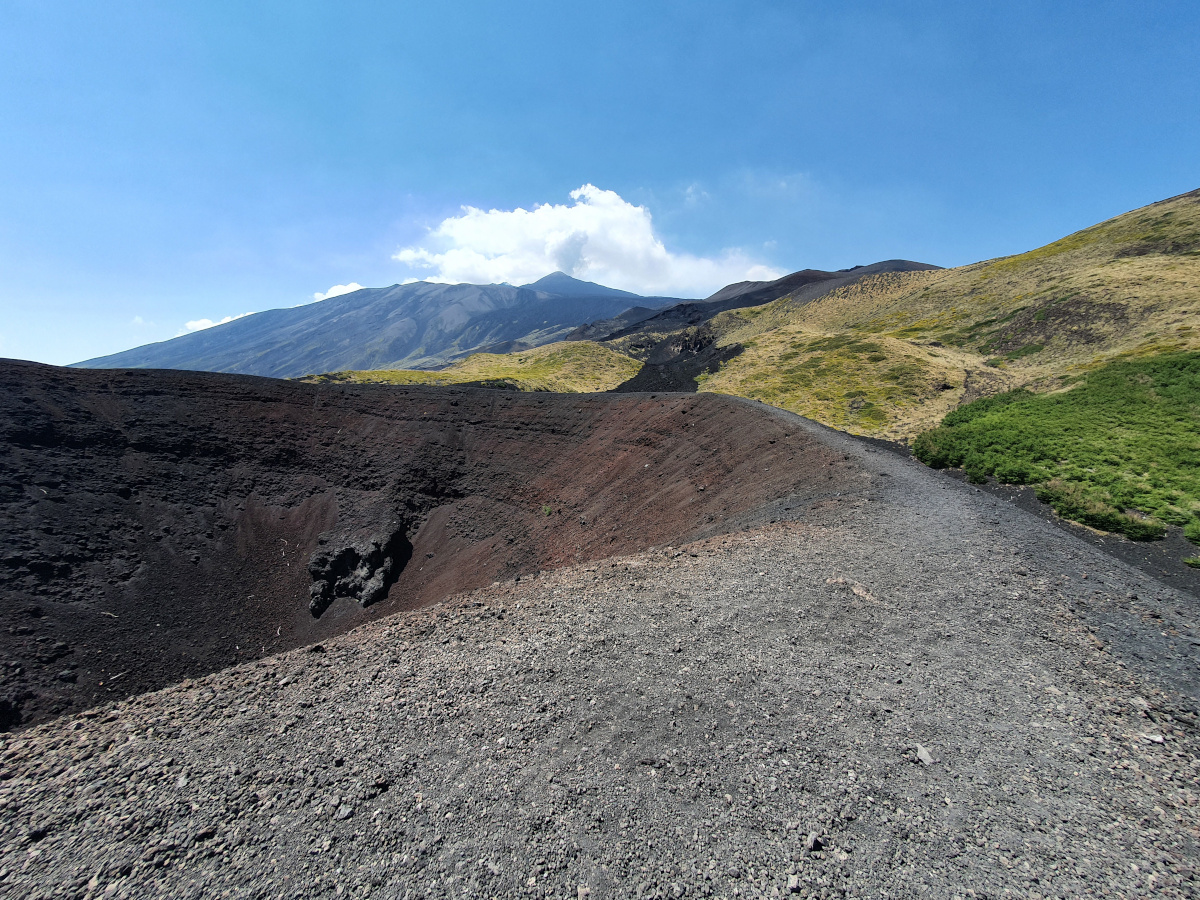A personal report
Today we are doing the North Craters Tour with EtnaWay, a tour to the craters from 2002. Meeting point is at 9am in Piano Provenzana on the north side of Etna. Our guide from EtnaWay is already waiting for us at the car park. We meet the others from the group and get to know each other over breakfast. In typical Sicilian style, we start the day with caffè (espresso) and a croissant filled with pistachio cream (cornetto).
Then the guide equips us with trekking poles, hiking boots and backpacks & off we go.
The destructive power of lava
Already at the start of our trek we see the lava flow of 2002, cutting through the forest on the slope in front of us and pouring out next to the souvenir stands and the ski school of Piano Provenzana. The tourist centre on the north side of Etna had to be rebuilt after the 2002 eruption, nothing is left of the old one.
The lava flow that erupted on the night of 27 October 2002 reached Piano Provenzana in only 10 hours and destroyed everything. Fortunately, no one was injured. A few hundred metres into our hike we see the last remains of the old tourist centre: the tip of a roof juts out of the lava. The only thing left of the two-storey hotel “La Betulla”.
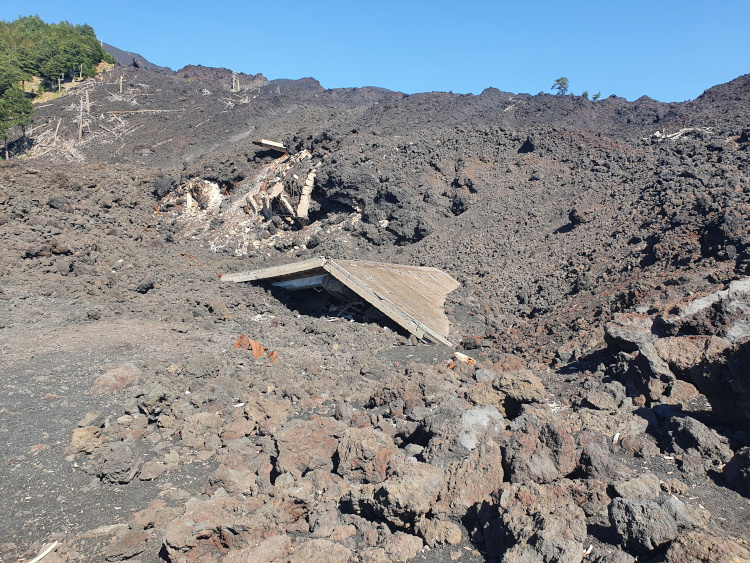
The 2002 eruption was a lateral eruption of Etna, which is also called the “perfect eruption” because all phases of an eruption could be observed:
- Fractures opened along the northeast and southeast rifts,
- pyroclastic cones (some of them huge) formed,
- there was explosive activity,
- ash fell from the sky for months
- and lava flows formed.
Another special feature is that eruptive systems were active on both the south and north sides of Etna.
The unknown and varied north side
Our hike takes us uphill through a pine forest. We stop at a strange round hole in the lava. Our guide explains to us what these “cannon stones” are all about: this hole was left by a tree! The lava flow has flowed around thick, old trees. The lava has wrapped itself around the trunk, cooled down and become solid. The tree inside has burnt completely, the hard, round crust, reminiscent of a cannon in its shape, remains.
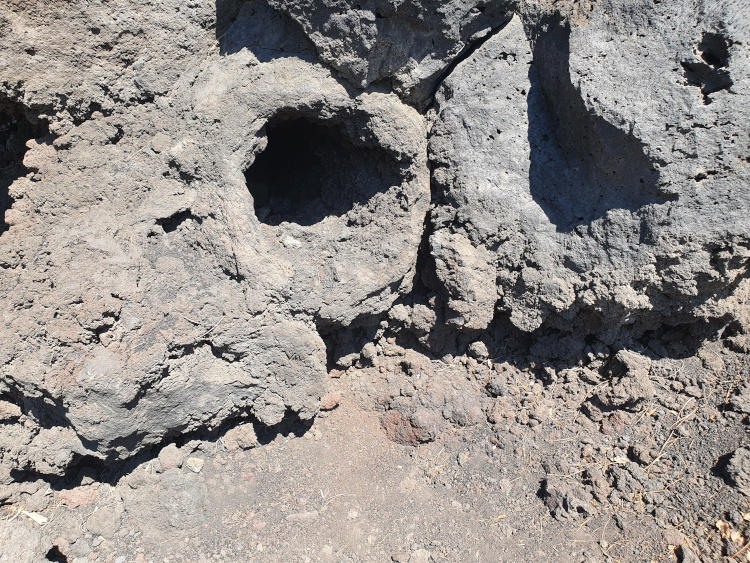
Now we cross the lava flow of 2002, which is still very dark and plants have not yet settled here. Suddenly we see a completely different picture: we are standing in front of a plain covered with yellow flowers (Tanacetum siculum, a plant endemic to Sicily), behind which is Monte Nero, which we are now heading towards.
Butterflies have been accompanying us the whole time on our hike: blue butterflies, white butterflies, rock graylings, a silver-washed fritillary and a hummingbird hawk-moth. The moth stays in place in flight, its wings buzzing like a hummingbird’s. It also has a long proboscis. It also has a long proboscis. With this it can even reach the nectar of Astragalus siculus, although its flowers sit behind long thorns. A perfectly matched duo!
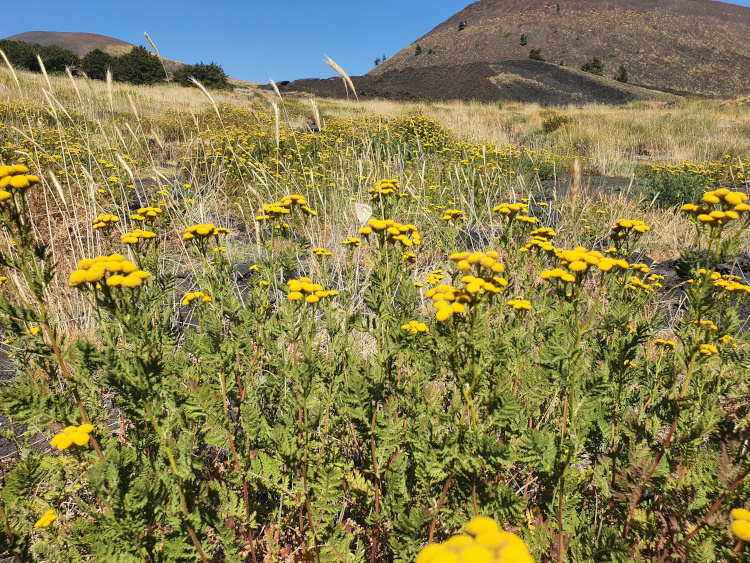
Our tour now leads us to the eruption of 1911. Here you can clearly see how the slope of Etna has broken up from top to bottom. A fissure with many small craters has formed, a so-called button bar (Bottoniera).
The huge craters of 2002
Then we walk back to the 2002 eruption, to the largest of the 25 craters that formed on the north side. The eruption lasted 10 days on the north side (much longer on the south side). In just 10 days, this huge lateral crater formed where we are now standing, and in just 10 days, a lava flow 10 km long was created. For Etna, that’s an enormous pace for a lava flow. It stopped – fortunately – 5 km before Linguaglossa, a small town in the north of Etna.
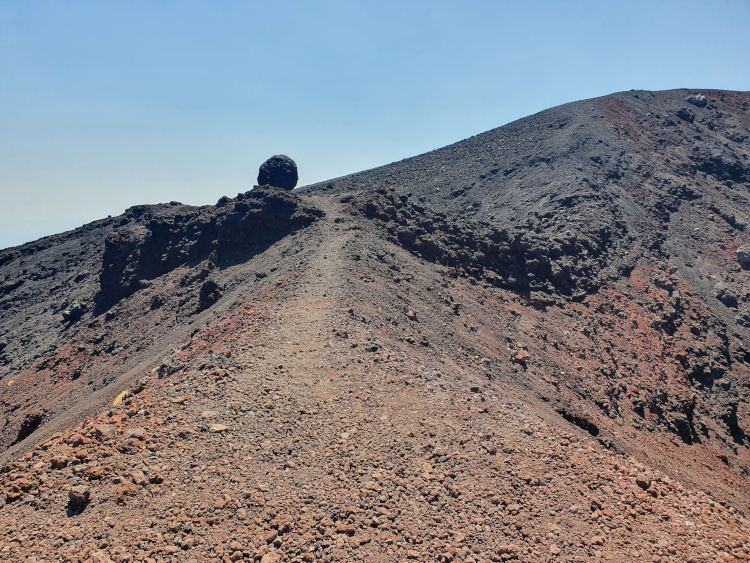
A huge lava bomb on the rim of a 2002 crater.
We walk along the crater rim and from this position we once again overlook the lava flow as it pours down the slope. We don’t see a calm river here, however, but a churning sea. The lava is piled up wildly, like valleys or waves, bizarrely shaped.
We are going downhill again. Along our route, bare, burnt trees once again bear witness to the destructive power of the lava.
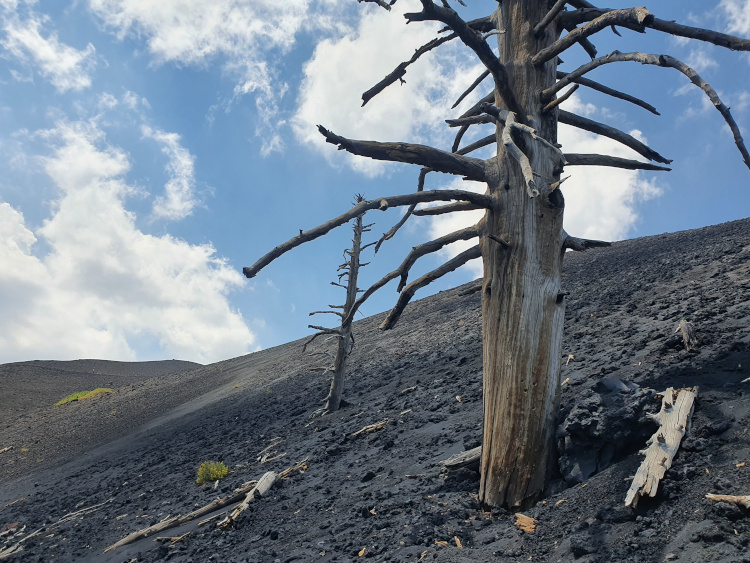
Back in Piano Provenzana, we first treat ourselves to our well-deserved break after the trekking. During a tasting of the typical products of the region, we get to know the other side of Etna. The ingredients for pesto, creams, honey and liqueurs thrive on the fertile volcanic soil.
Visit of a lava tunnel
The last stop on our tour is a lava tunnel, the “Grotta dei Ladroni” (Robbers’ Cave). These tunnels are formed during an eruption: when the lava flows slowly, it cools on the surface, becomes solid and forms a crust. Underneath, the lava continues to flow hot. When the eruption ends and no more new lava comes, the tunnel thus created empties.
This cave was used as a hideout by a gang of robbers a few centuries ago. It has two entrances that lead to the interior via narrow, steep steps carved into the stone.
With helmets and lamps, we explore the inside of the volcano and discover some geological features here as well.
Back on the surface we say goodbye … until the next adventure with EtnaWay!
Etna North Craters Tour
Discover the unknown and wild north side of Mount Etna with us - on our North Craters Tour!

